Recent Articles
Popular Makes
Body Types
10 Reasons the 2018 Honda CR-V is the AutoWeb Buyer’s Choice Best Utility Vehicle of the Year
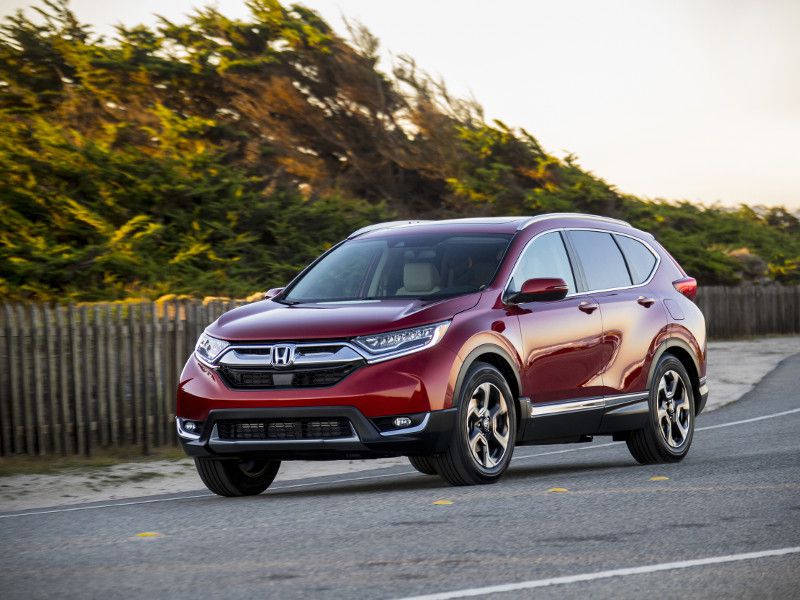
2018 Honda CR V red driving ・ Photo by Honda
In a year of very stiff competition, it wasn’t the biggest, most powerful or most luxurious utility vehicle that came out on top. No, the honor goes to the 2018 Honda CR-V. Now in the second year of its fifth generation, the CR-V continues to demonstrate that value, dependability and all-around utility are all virtues that make a crossover utility vehicle great. The CR-V’s humble origins as a “cute ute” began in the 1997 model year in North America. With a plucky personality and tailgate-mounted spare tire, it gained instant popularity with buyers seeking SUV looks in a compact package. The CR-V really took off when it shed its SUV look and tailgate-mounted spare in a third-generation makeover in 2007. A decade later, the fifth-gen debuted with the most advanced powertrain, layout, refinement and technology the CR-V had ever seen — leading to this year’s win in the Small SUV and overall Best Utility categories.
10) The 2018 CR-V is the biggest version to date.
Thanks to the addition of the subcompact HR-V to the Honda lineup, the CR-V’s designers were free to stretch out a little, adding 1.6 inches to its wheelbase and 1.2 inches to this model's overall length. That has resulted in another 2.1 inches in rear legroom, making the CR-V’s second row the roomiest in the class. An extra 1.4 inches in width also translates to more hip and shoulder space, while a concurrent gain of 1.4 inches in height makes the whole cabin feel more open.
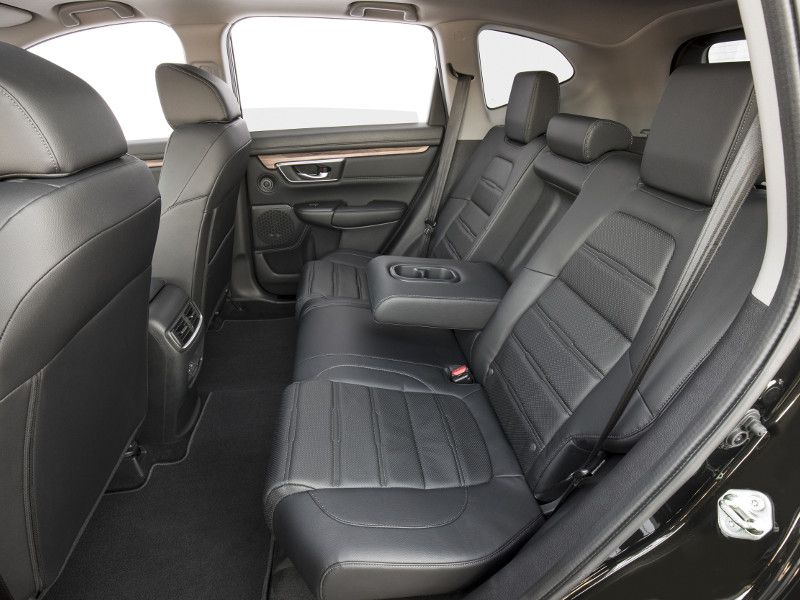
Photo by Honda
9) It can carry bigger and longer cargo than before.
Passengers aren’t the only beneficiaries of the additional inches added to the CR-V. Cargo space has also increased. You can get 39.2 cubic feet of luggage into the area behind the second row, and up to 75.8 cubic feet of cargo into the hold when you fold the 60/40-split second row flat — a feat that is also much easier than in most previous generations. The load floor is 9.8 inches longer than before, too, making the space more useful — just what you want in a utility vehicle.
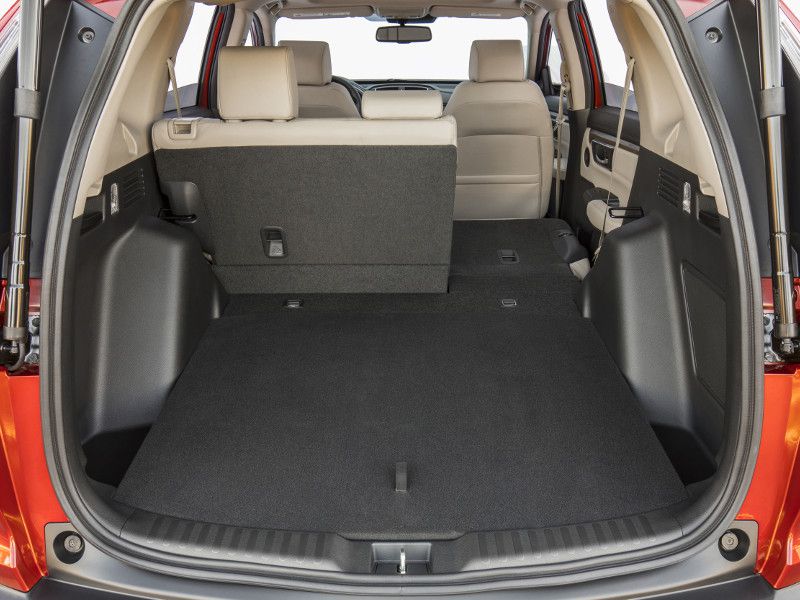
Photo by Honda
8) The CR-V gets a choice of two engines — and one of them is a turbo.
For the first time in its history, the Honda CR-V comes from the factory with a turbo. It’s not a big surprise, as the engine is a close relative to the turbo that is also sold in the latest Civic and Accord. The industry trend toward small-displacement turbocharged engines with direct injection was bound to make it to the CR-V. Base LX models still come with a naturally aspirated (non-turbo) 2.4-liter four-cylinder that produces 184 hp and 180 lb-ft of torque, carried over from last year. All other trims get a 1.5-liter turbocharged four-cylinder, which puts out 190 horsepower and 179 lb-ft of torque. The smaller, lighter turbocharged powerplant is not only more powerful than the bigger engine but also more efficient, and it delivers its power in a very usable way. It produces torque quickly and then stays close to peak torque as the revs build, providing a very useful power band. The transmission shifts less, the engine purrs as it works, and all is right with the world.
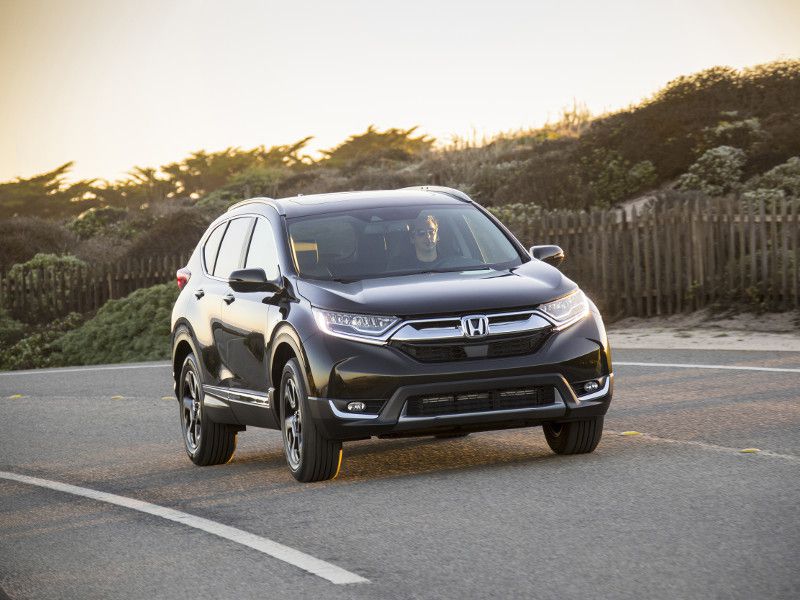
Photo by Honda
7) It gets better fuel economy.
One of the merits of a compact crossover vehicle like the CR-V is great fuel economy, and each engine choice in the CR-V delivers. Even the carryover 2.4-liter engine is rated by the EPA to get 26 mpg city/32 mpg highway/28 mpg combined in front-wheel drive configuration, or 25 mpg city/31 mpg highway/27 mpg combined with all-wheel drive.
The new 1.5-liter turbo is even better, with outstanding ratings of 28 mpg city/34 mpg highway/30 mpg combined with front-wheel drive, and 27 mpg city/33 mpg highway/29 mpg combined in all-wheel drive form. It’s impressive when a vehicle can gain size and power, as the CR-V has done, and still come away with an increase in fuel economy.
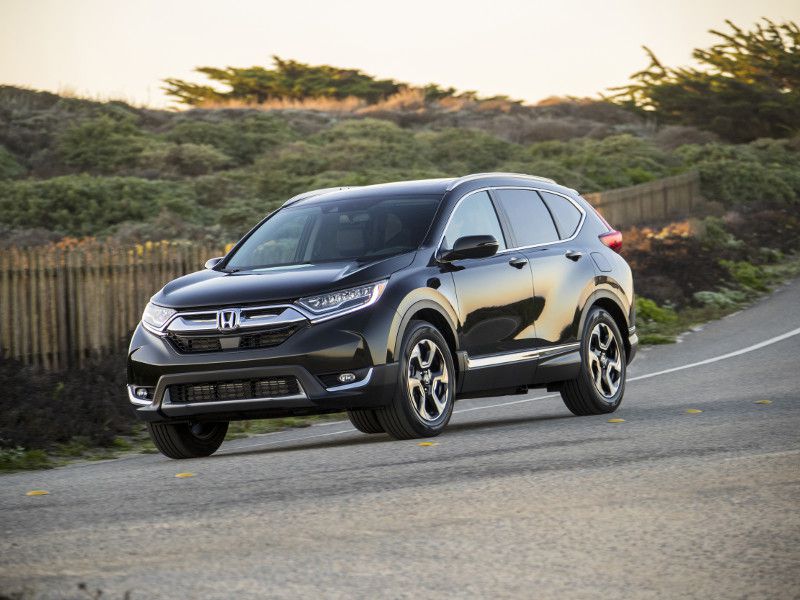
Photo by Honda
6) It’s available with an impressive array of traditional and advanced safety systems.
Honda’s comprehensive suite of semi-autonomous driving technologies, Honda Sensing, is standard on all but the base CR-V LX for 2018. That brings a host of advanced safety features, including a collision-mitigation braking system and forward collision warning, lane-keeping assist, road-departure mitigation, lane-departure warning, blind-spot information system, and adaptive cruise control with low-speed follow. The CR-V's driver attention system can also sense when you might be sleepy behind the wheel; it might send you for a cup of coffee if your driving is affected. All CR-V models also benefit from an energy-absorbing chassis, electronic stability control, anti-whiplash seats, advanced front airbags, side curtain protection and a rearview camera. The CR-V received a five-star safety rating from the National Highway Traffic Safety Administration and a Top Safety Pick designation from the Insurance Institute for Highway Safety.
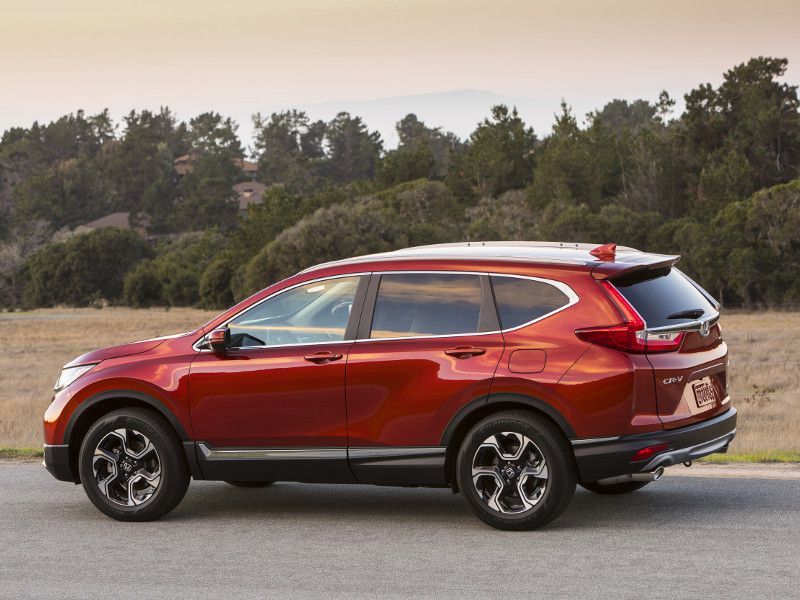
Photo by Honda
5) It’s quiet inside.
The CR-V has gotten more and more refined over its 20-year evolution, and the current generation truly excels when it comes to cabin serenity and quietness. Honda’s engineers explain that they’ve improved the door-sealing capability of the vehicle, which helps to keep road and traffic noise from seeping in to the cabin. They also used new levels of carefully placed sound-deadening materials in the doors, floor and roof and behind the dashboard, capturing and absorbing unwanted sounds before they reach your ears.
Finally, sophisticated electronic active noise cancellation (similar to the technology used in noise-canceling headphones) was introduced into the cabin as a final line of defense. The result is a quiet ride that is less fatiguing, which contributes to both comfort and safety.
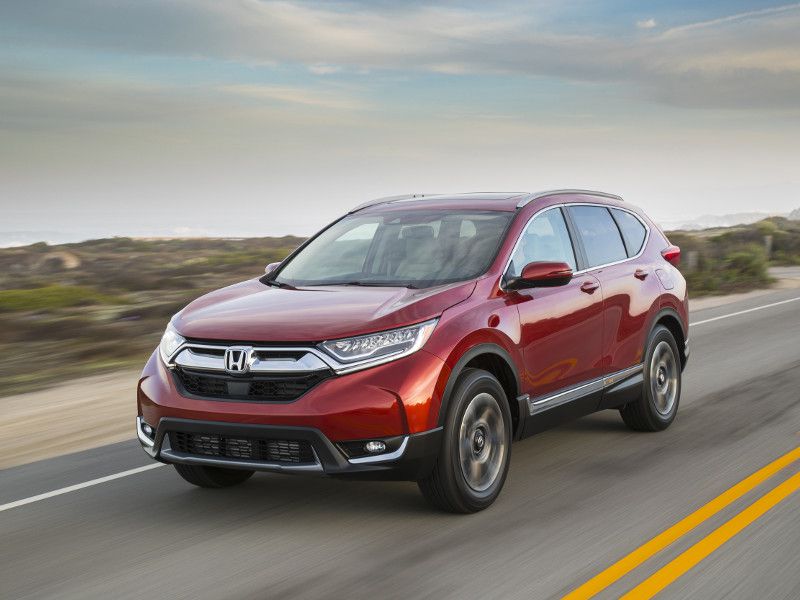
Photo by Honda
4) Its center stack is loaded with technology and connectivity.
Honda had an advertising tagline in the late 1970s and early 1980s: “We make it simple.” Though this tagline has faded, the same philosophy is on display in the design and operation of the 2018 CR-V's center stack, technology and connectivity.
The HondaLink connected car system provides the backbone, accessed through a high-definition 7-inch touchscreen supports Apple CarPlay and Android Auto, and HondaLink Assist emergency aid that works with a connected smartphone. Other available features include HD radio, SiriusXM satellite radio 2.0, navigation with digital traffic, Pandora, SMS text messaging and voice recognition. It's simple, yet also highly sophisticated and functional.
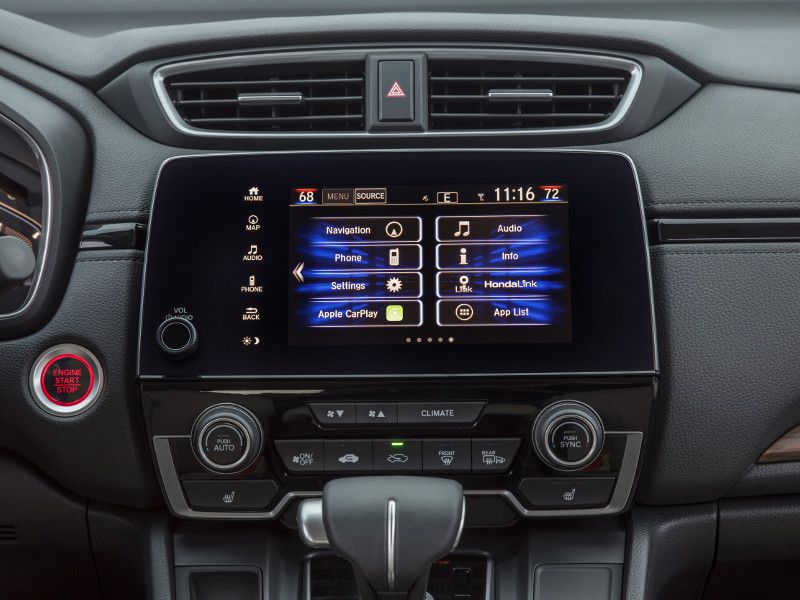
Photo by Honda
3) It has seats and cabin comfort befitting a luxury car.
As the CR-V has grown up and matured through the generations, it has edged ever closer to the premium class of vehicles by virtue of a great selection of standard and optional high-end features. The highlight might be the seats, especially the leather-appointed ones in the Touring trim level.
Some reviewers have pointed to these comfortable, supportive seats and suggested that the line between Honda and its luxury division Acura has been blurred because the CR-V’s level of fit, finish and material selection has gotten so high.
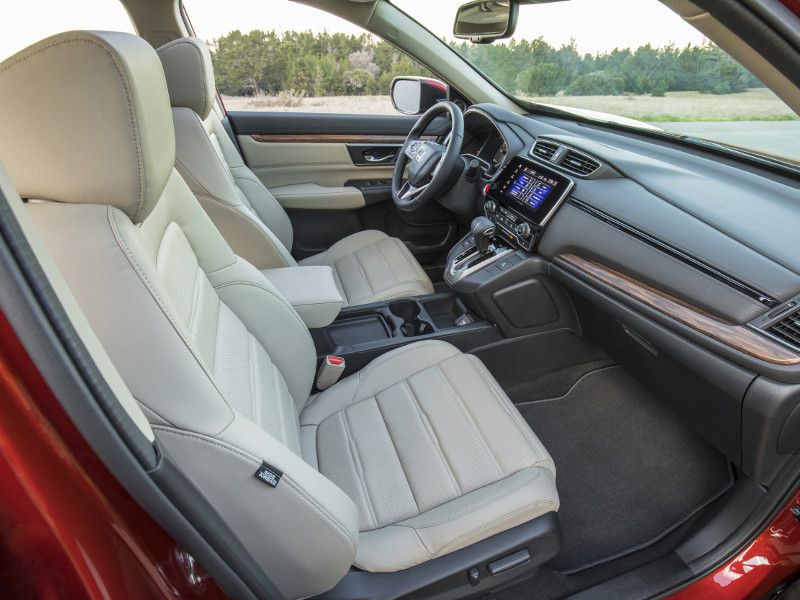
Photo by Honda
2) It is priced very well against the competition.
The front-wheel drive CR-V LX starts at $24,045, and the top-of-the-line all-wheel drive CR-V Touring hits $33,795. Compare that range with the Toyota RAV4 (the second-best seller in the class), and prices line up almost directly. You can get a base Hyundai Santa Fe Sport for a few dollars less than a CR-V LX, but matching feature for feature in the popular and top-of-the-line models brings parity. Choosing a crossover in this class is much more a matter of taste and preference than it is price — which allows the CR-V to shine through.
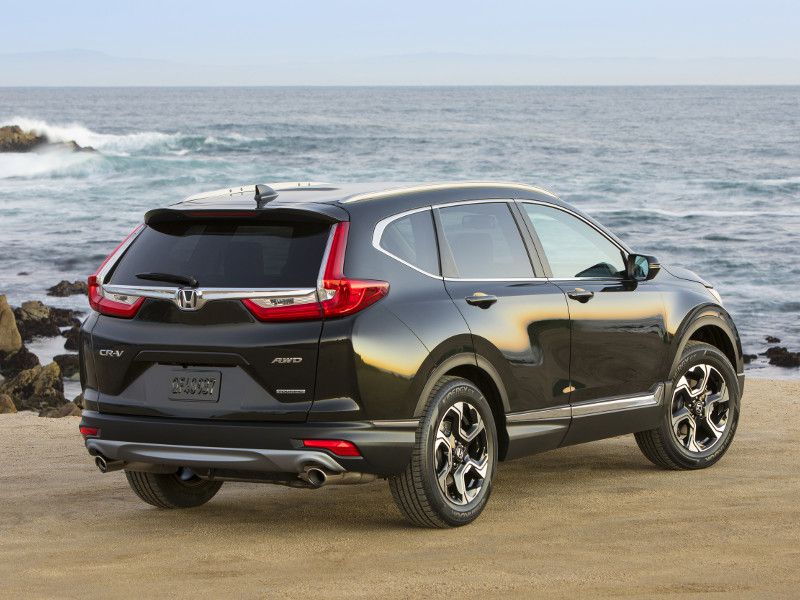
Photo by Honda
1) It has been the most popular SUV in the U.S. for years.
The CR-V has topped the sales charts for SUVs for years, and it shows no signs of slowing. Sales have increased annually since 2009 and now top 350,000 units per year. That’s a lot of CUVs. The CR-V also performs very strongly in the used market, thanks largely to the deserved reputation for durability and quality. If you acquire a 2018 Honda CR-V and take good care of it during your stewardship, you will likely be able to sell it for a good price when you’re ready for a new vehicle in a few years.
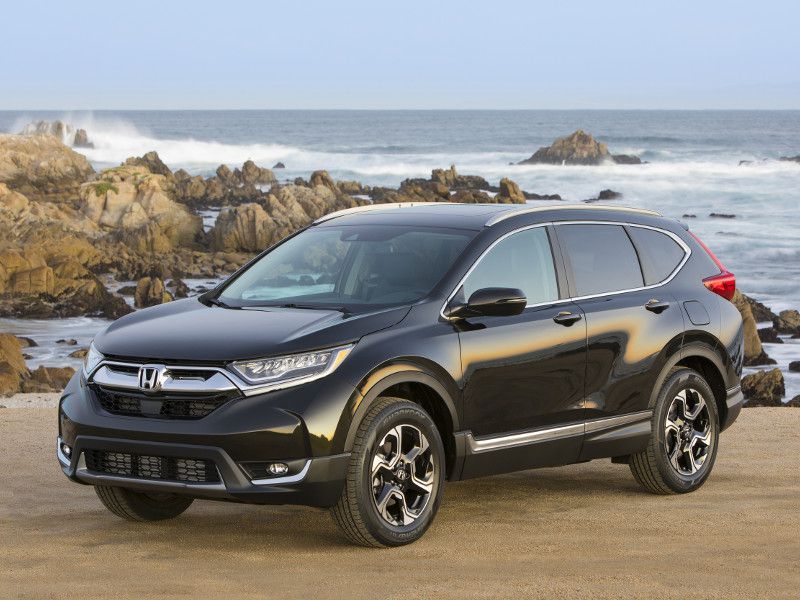
Photo by Honda